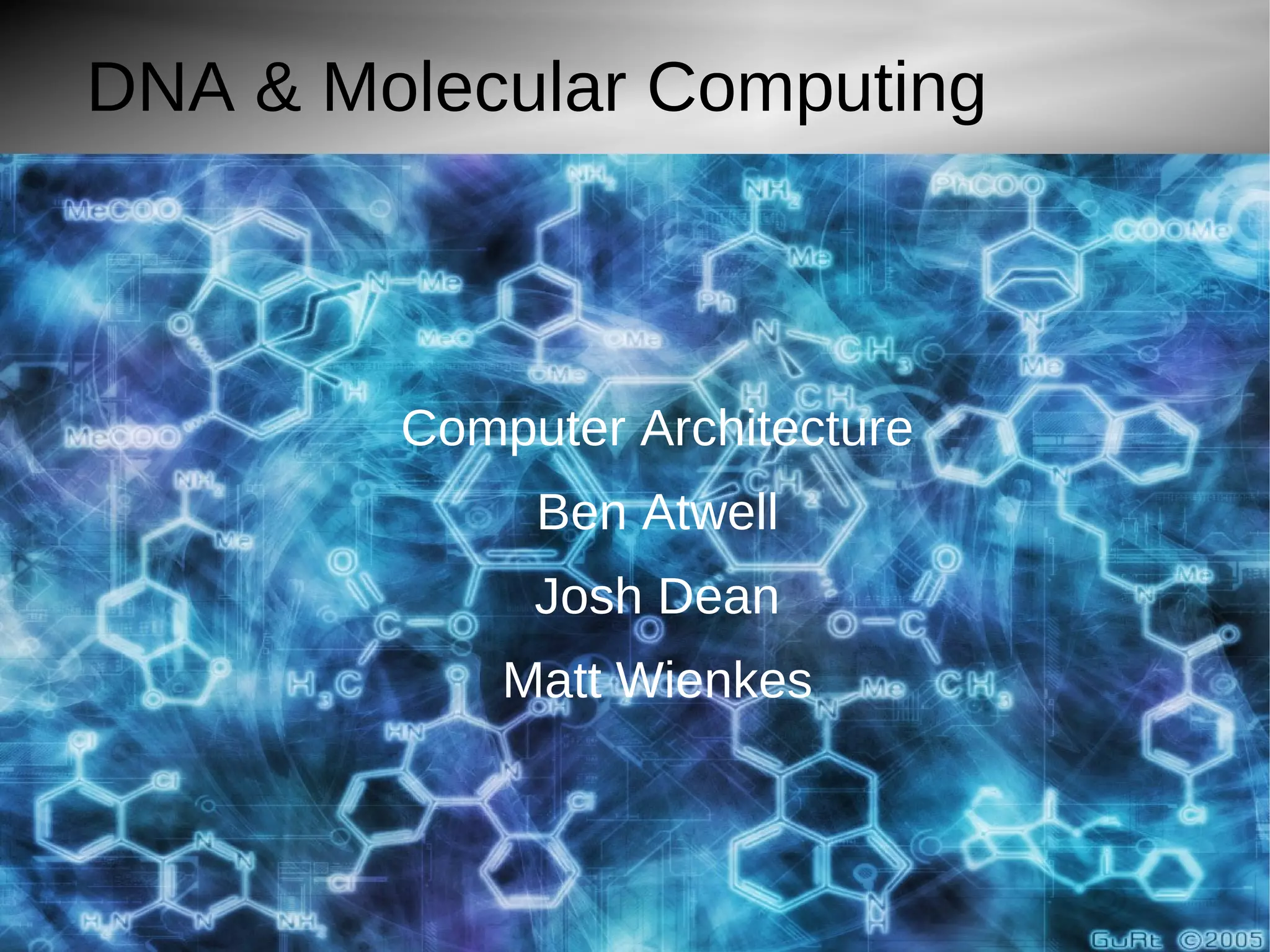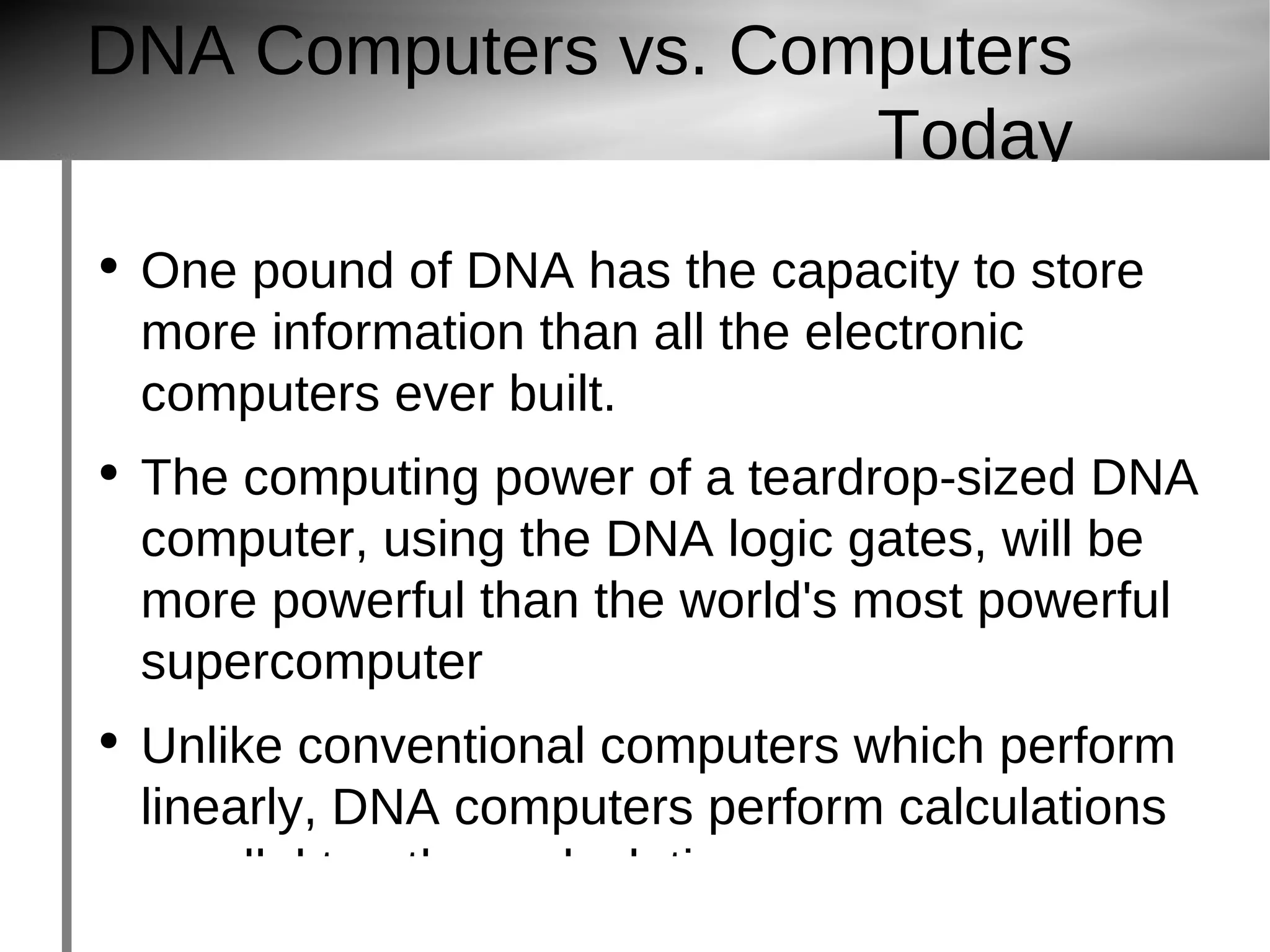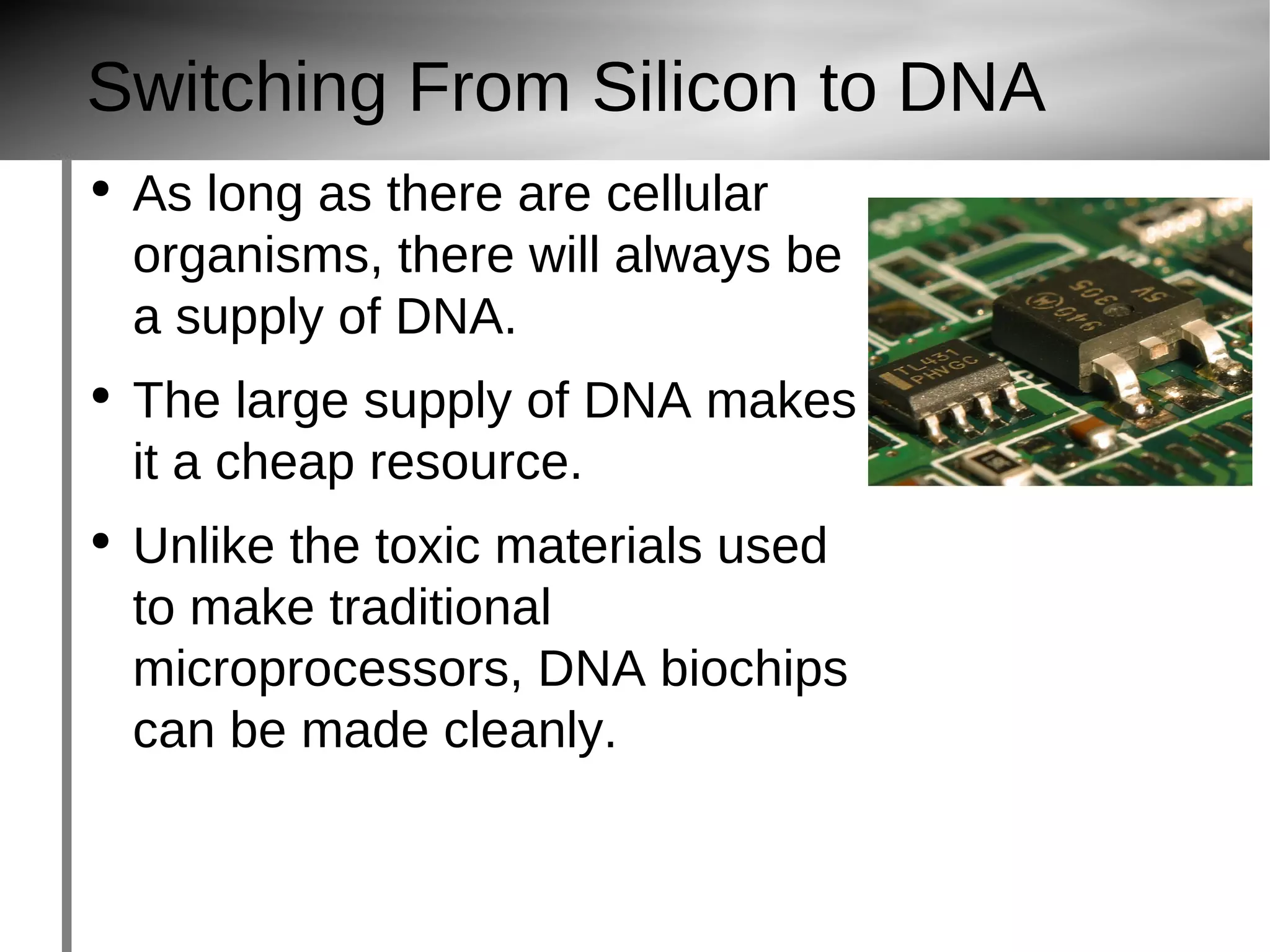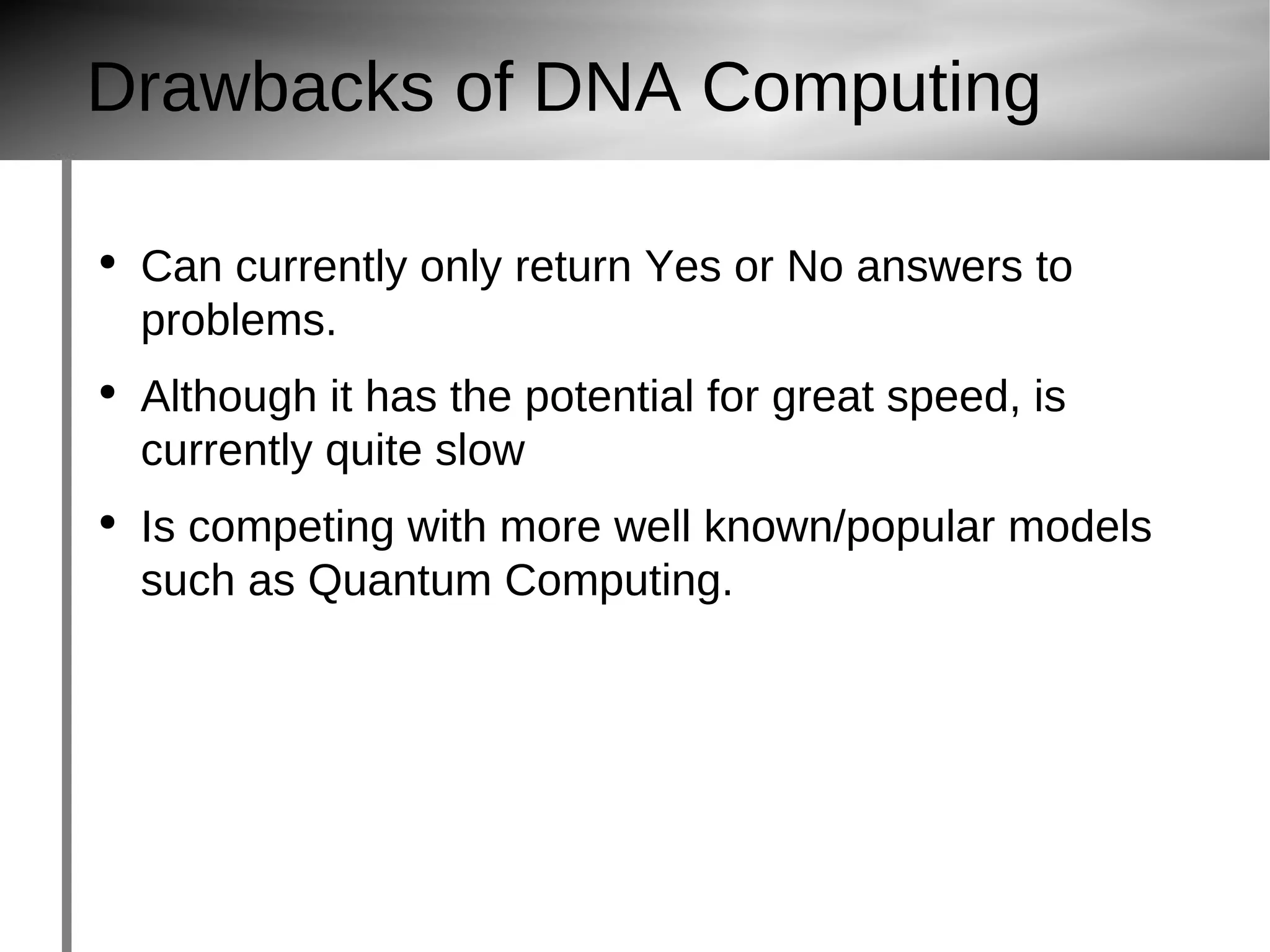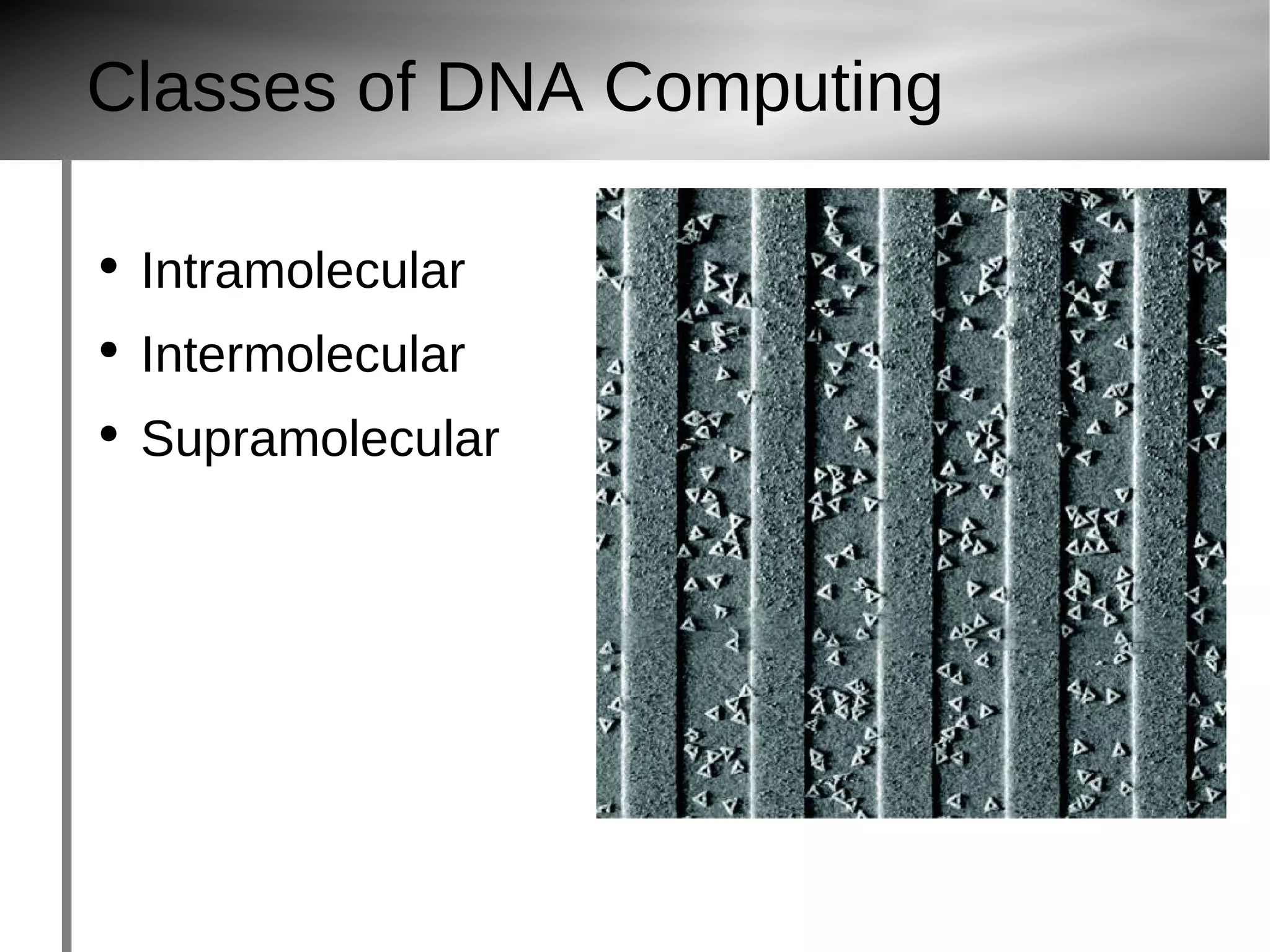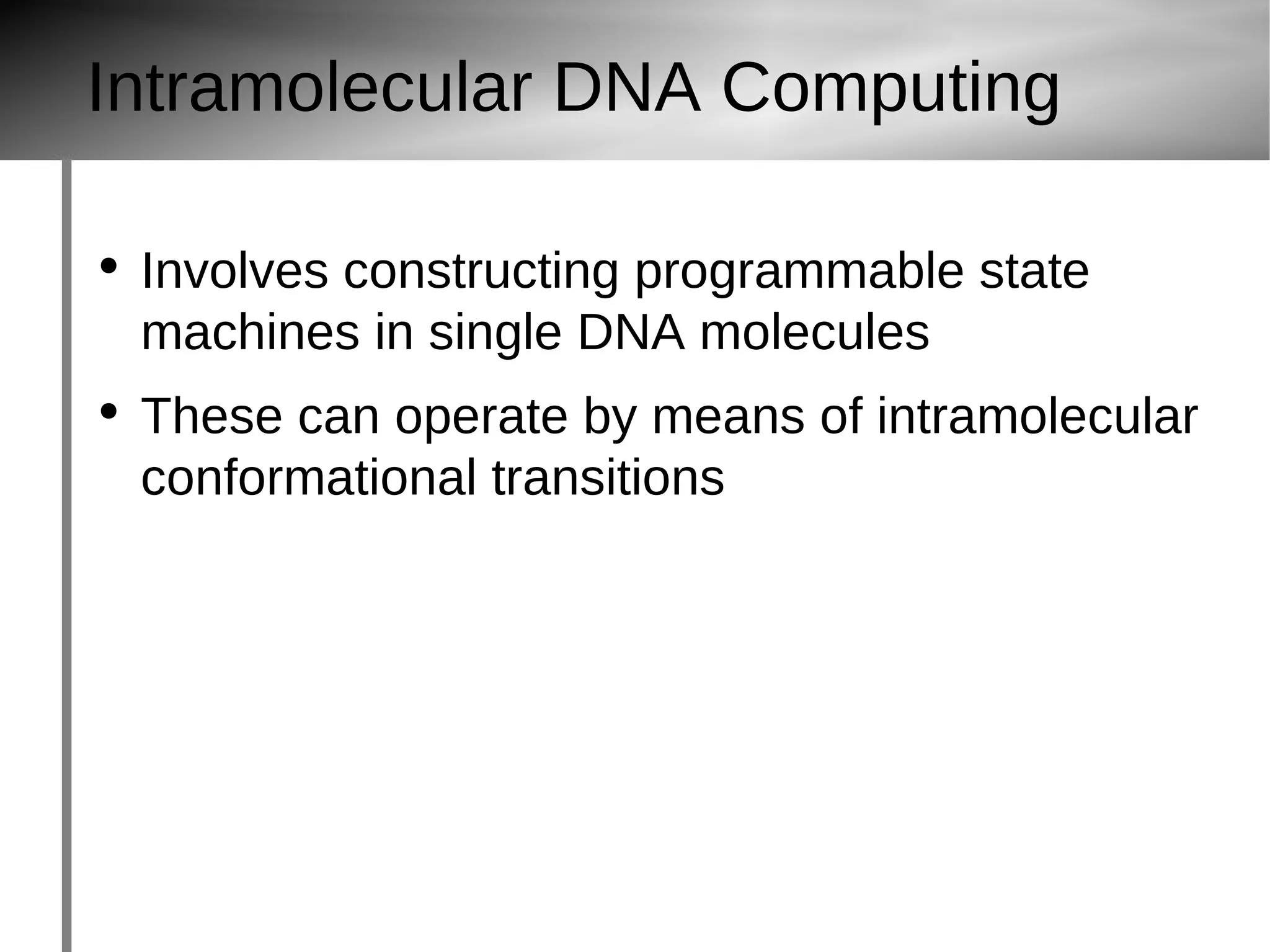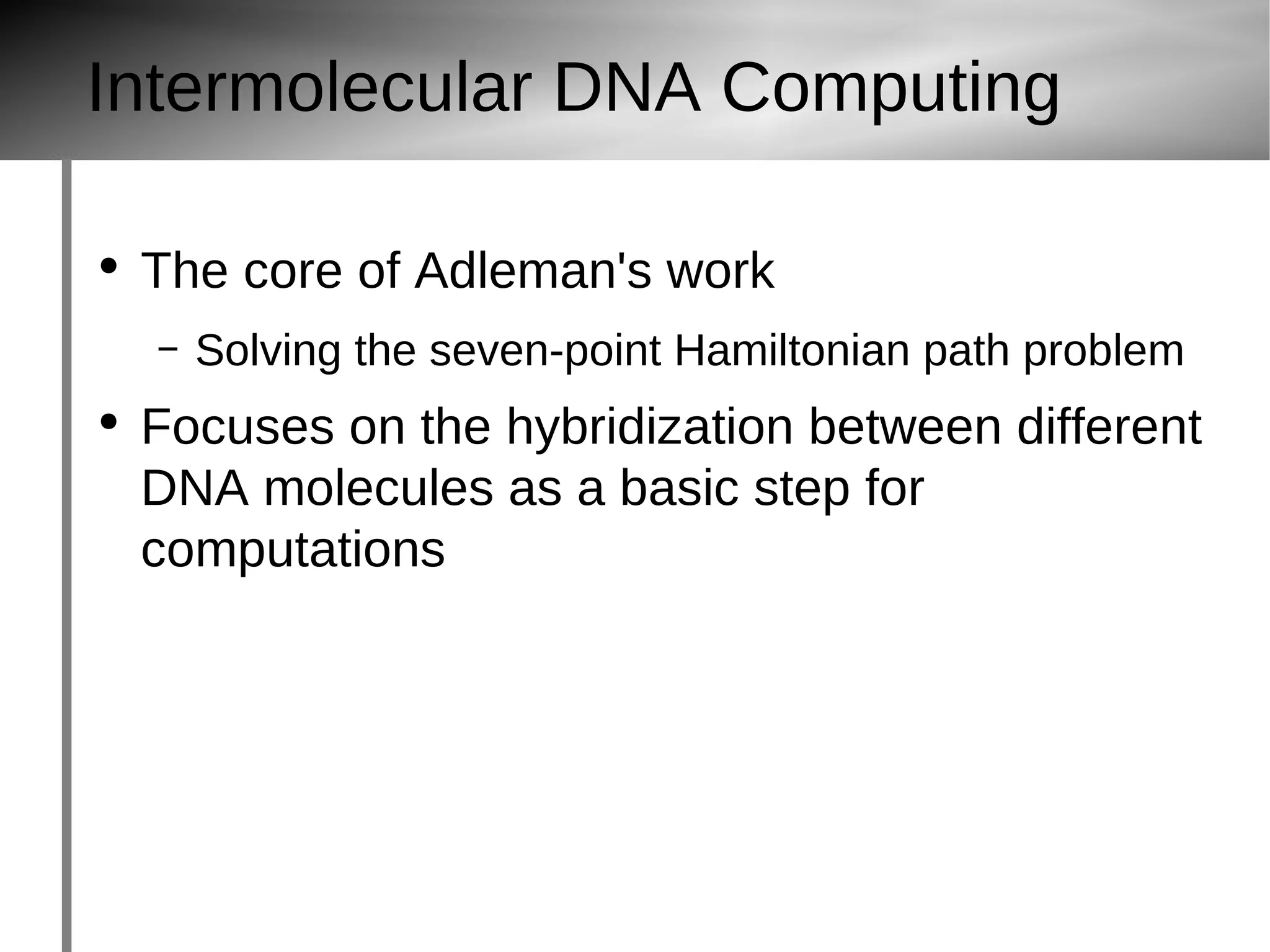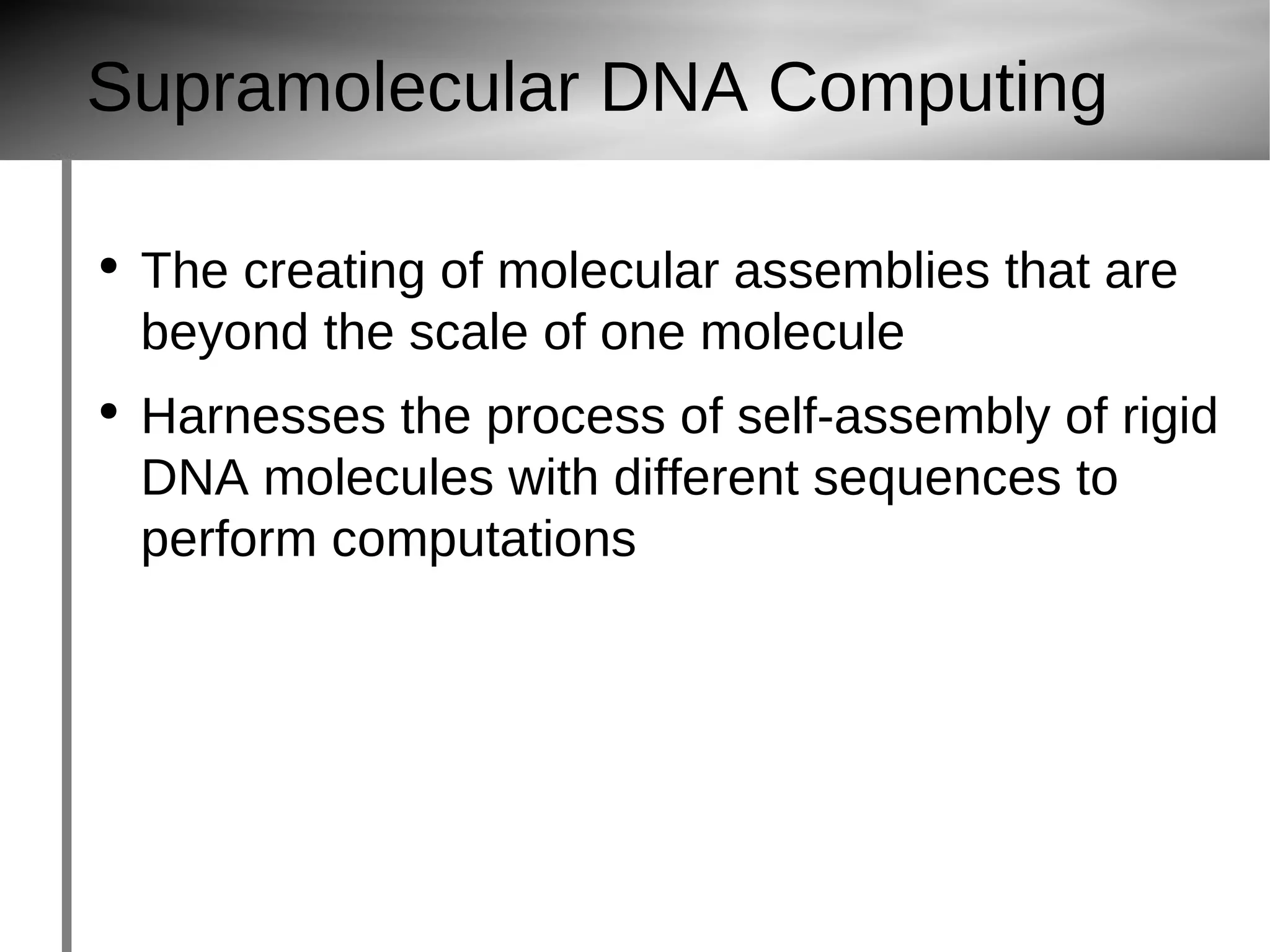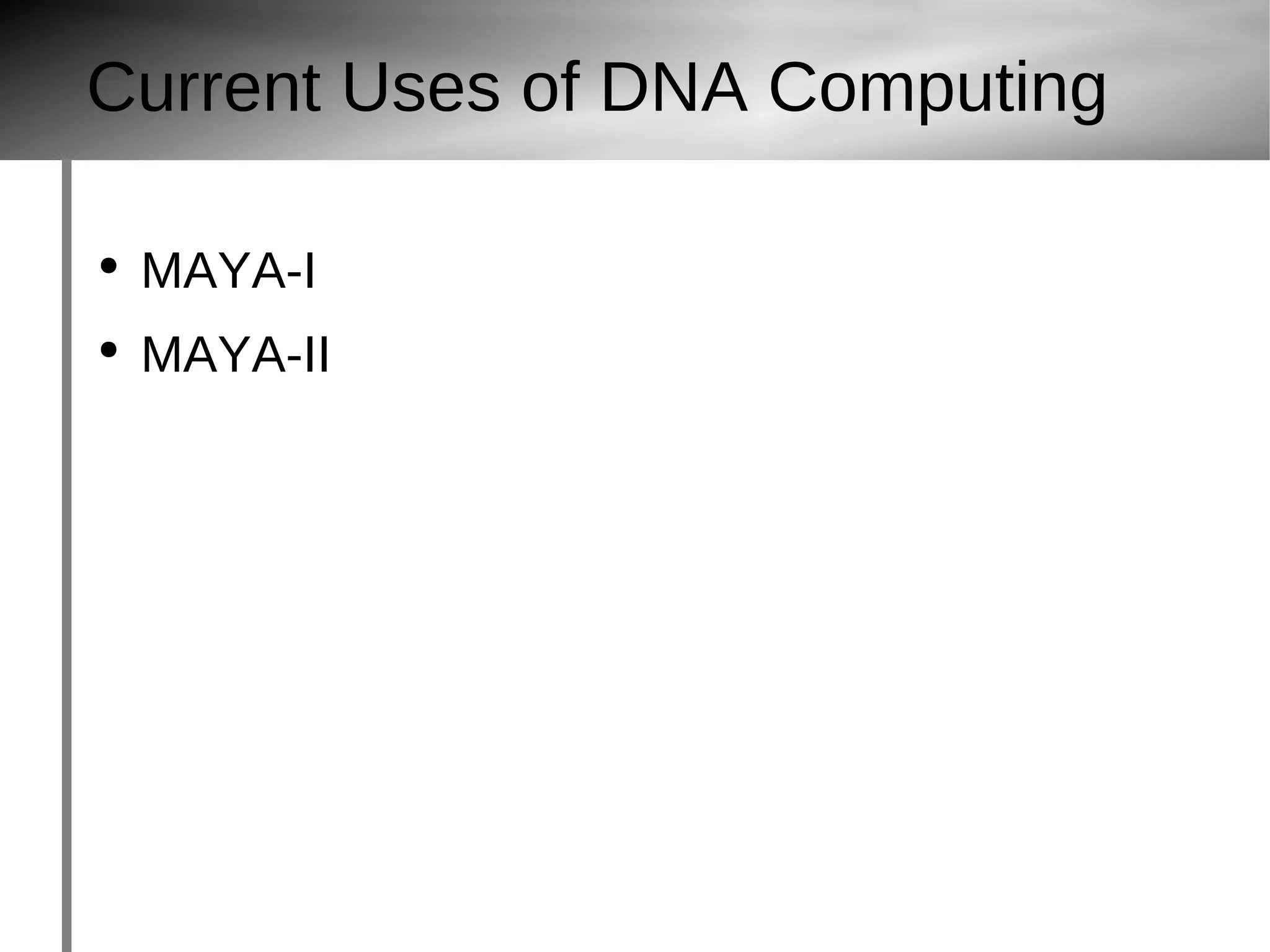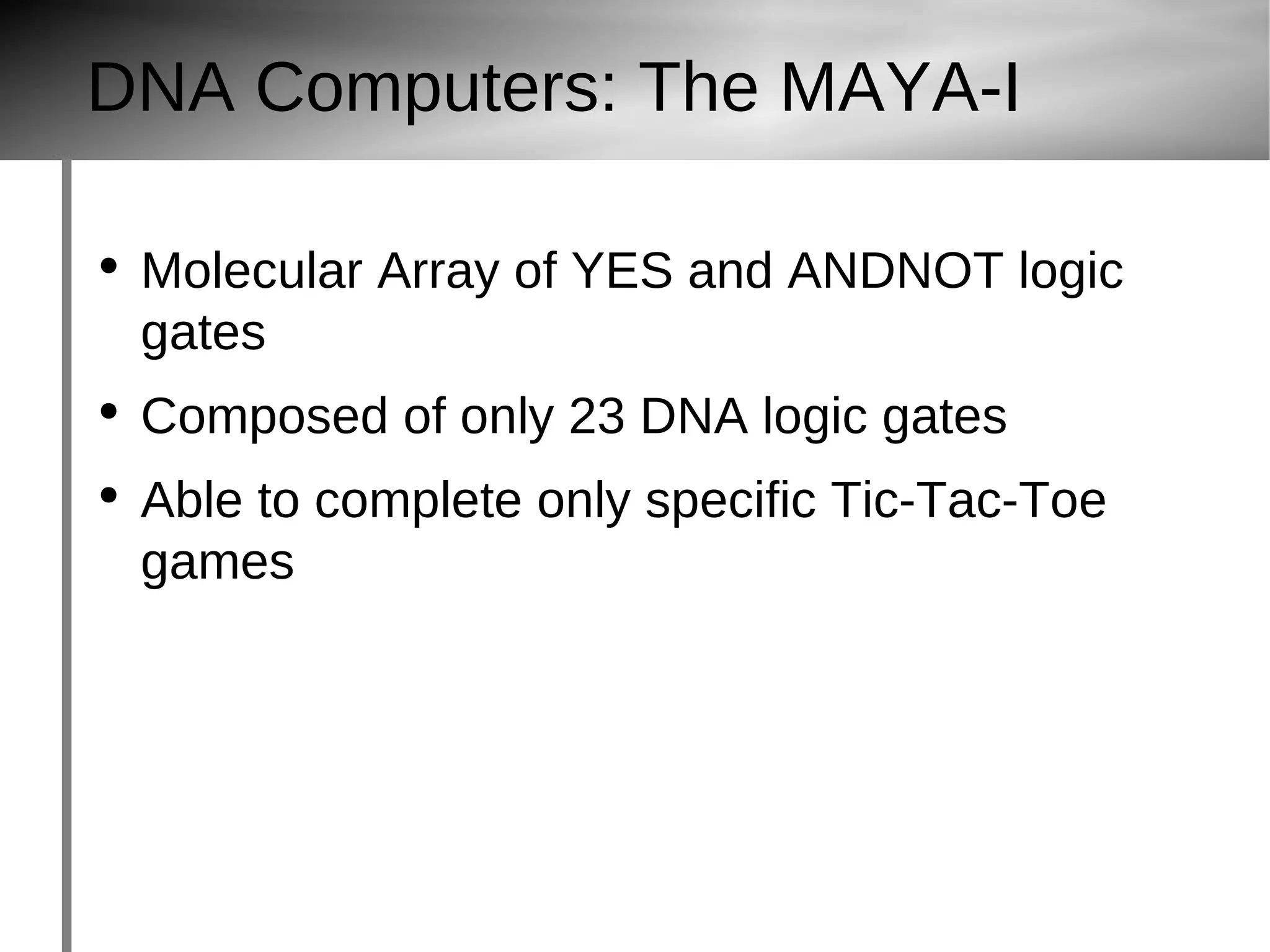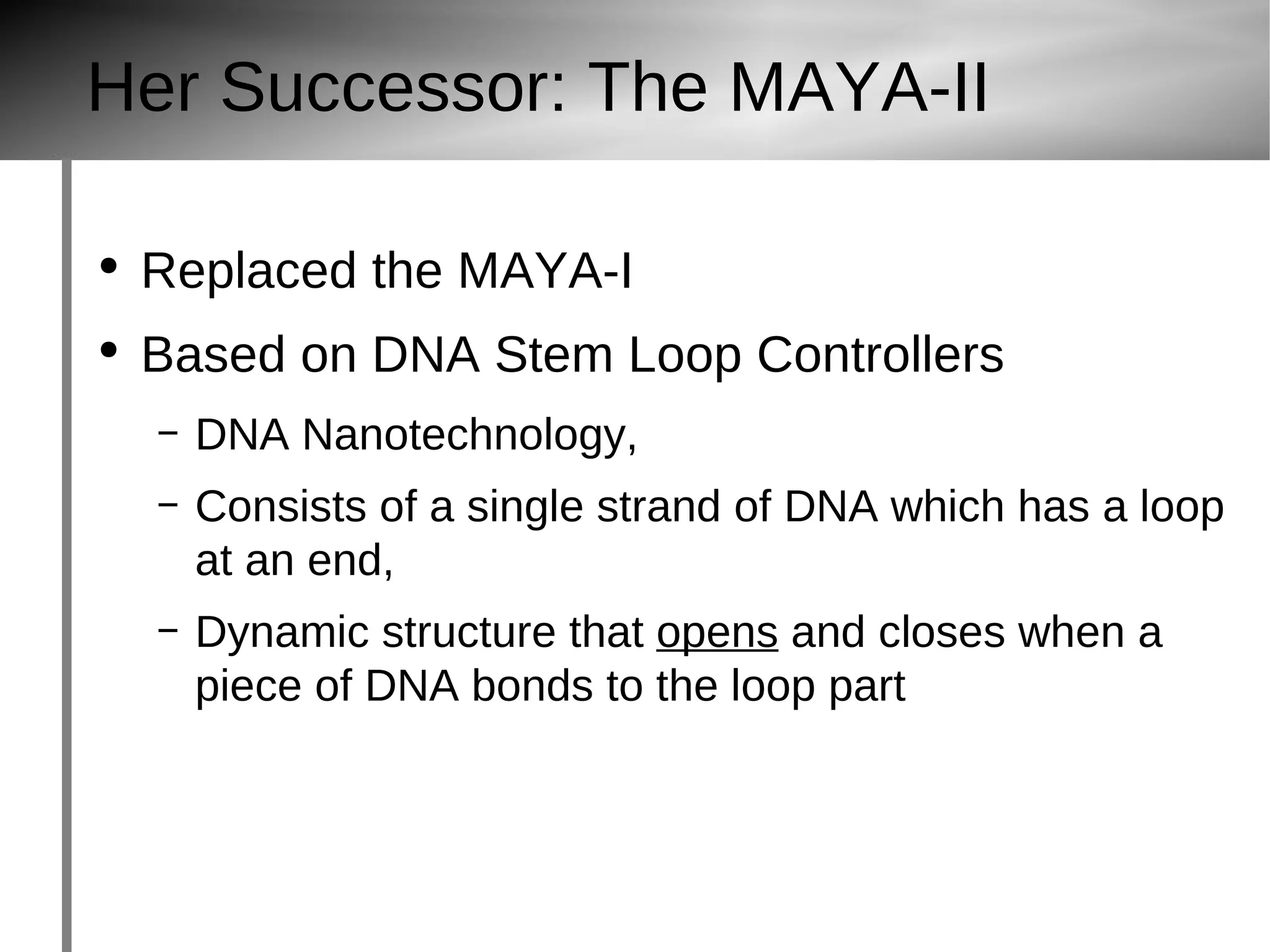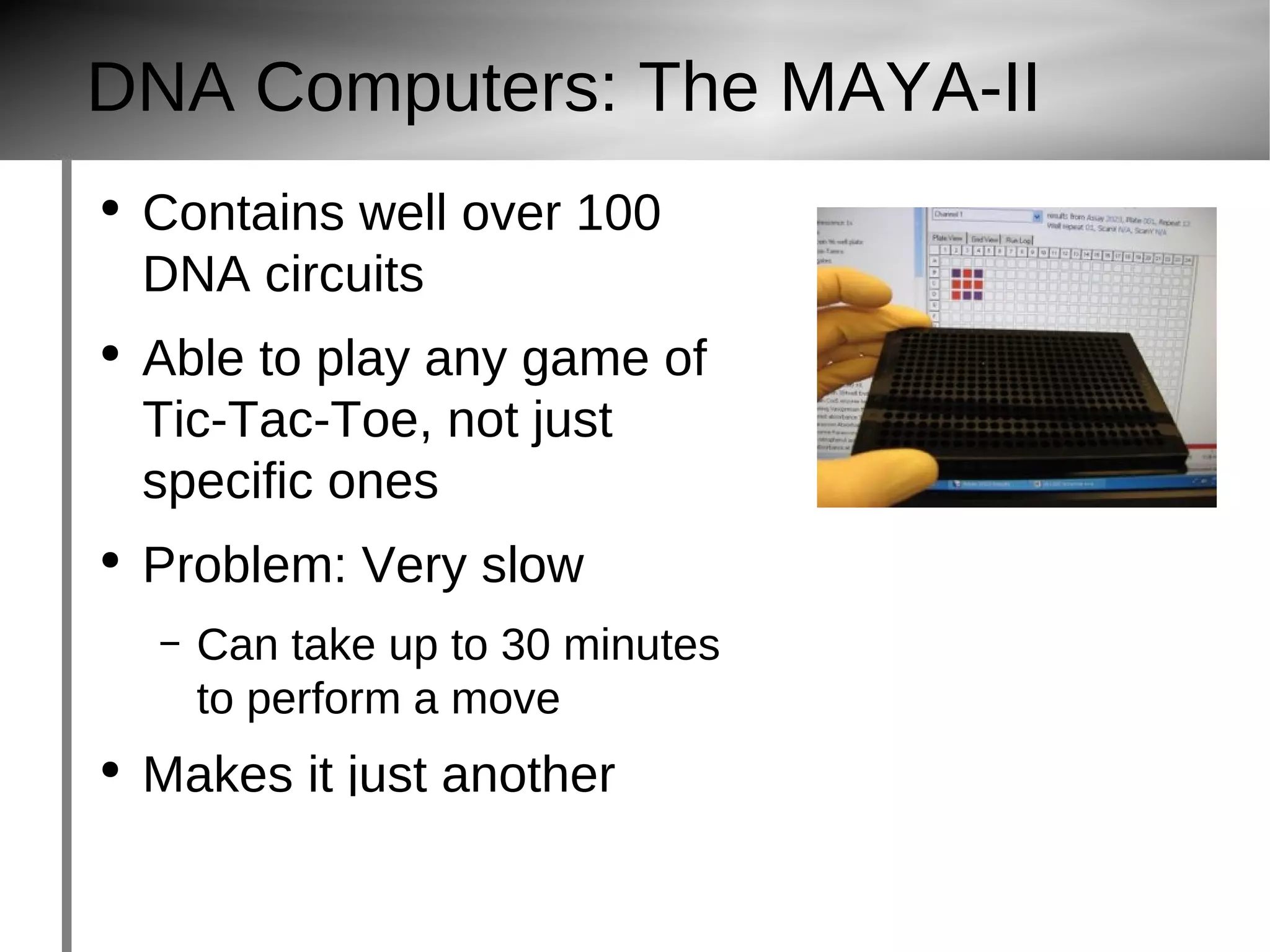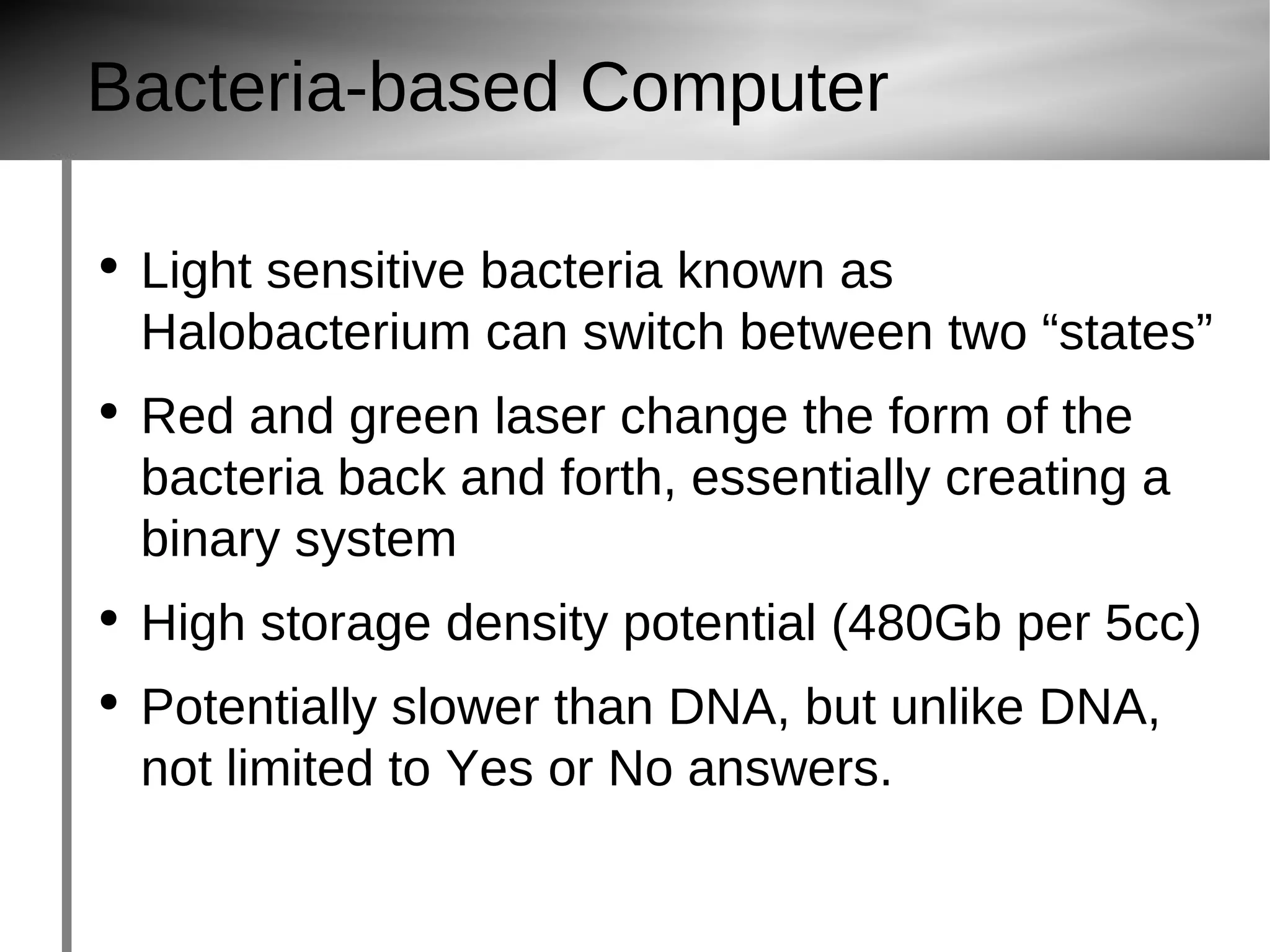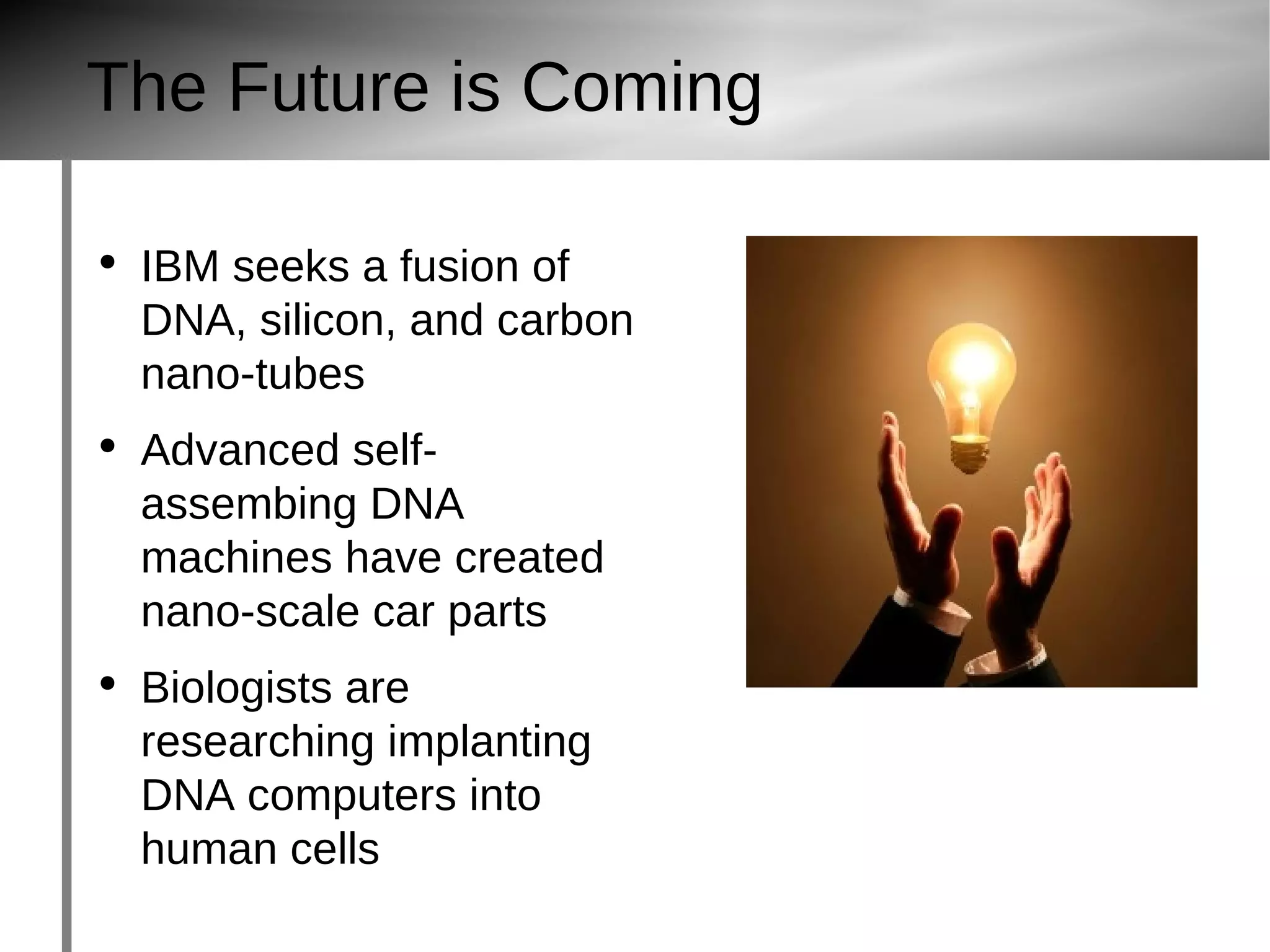DNA has potential as a material for computing due to its large storage capacity and ability to perform calculations in parallel. While DNA computing is currently slow and can only return yes or no answers, researchers are working to address these issues and develop more complex DNA-based computers. Examples include the MAYA computers which used DNA logic gates to play Tic-Tac-Toe, and experiments using light-sensitive bacteria to create a basic binary system for information storage and processing.
